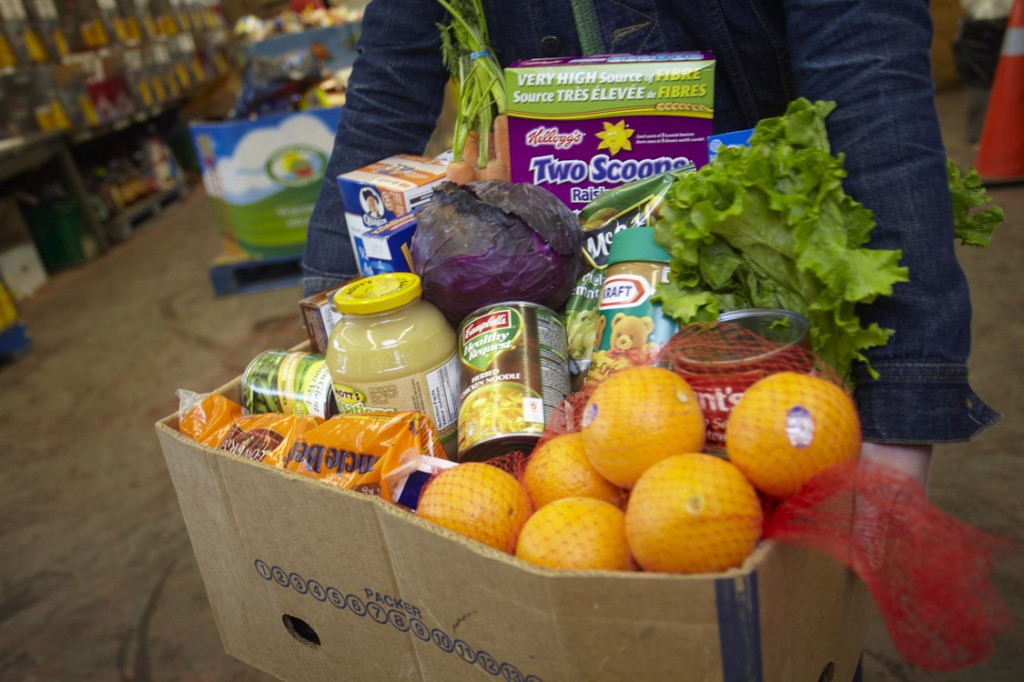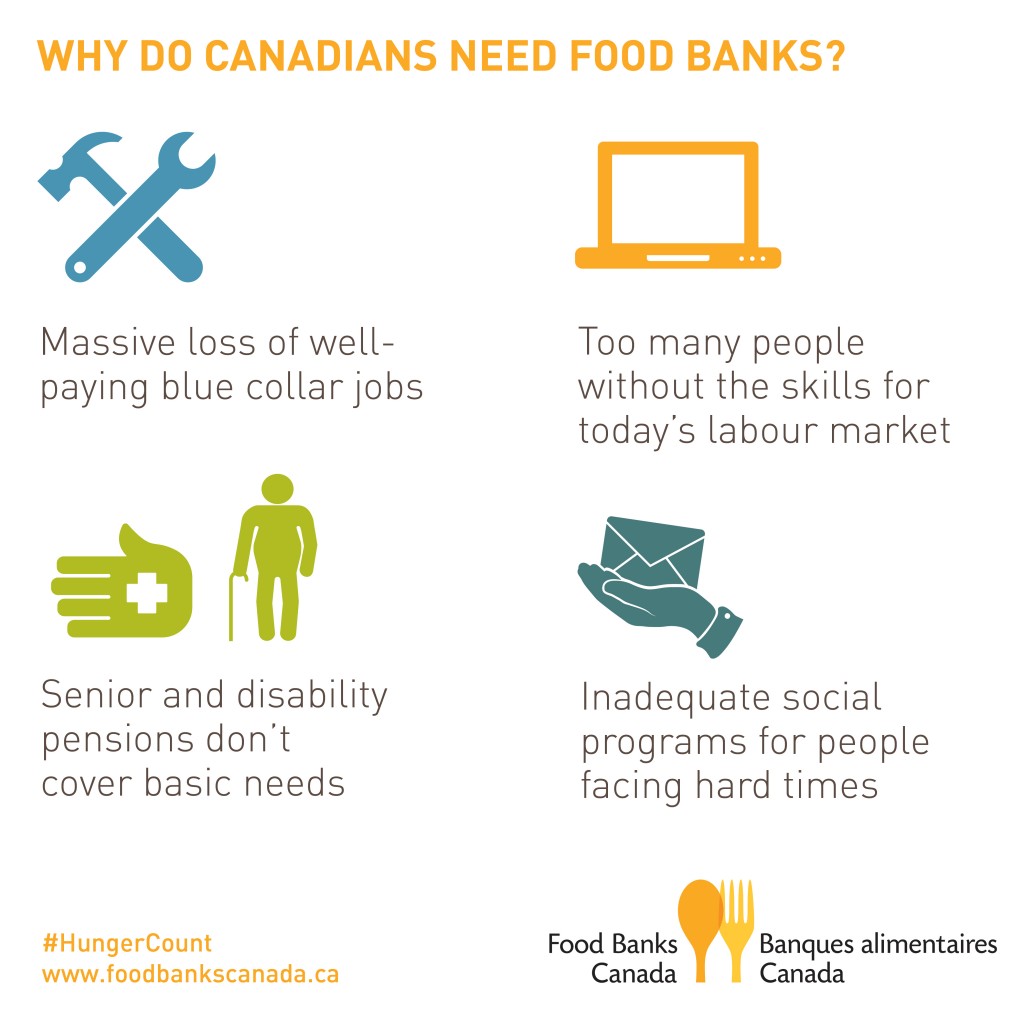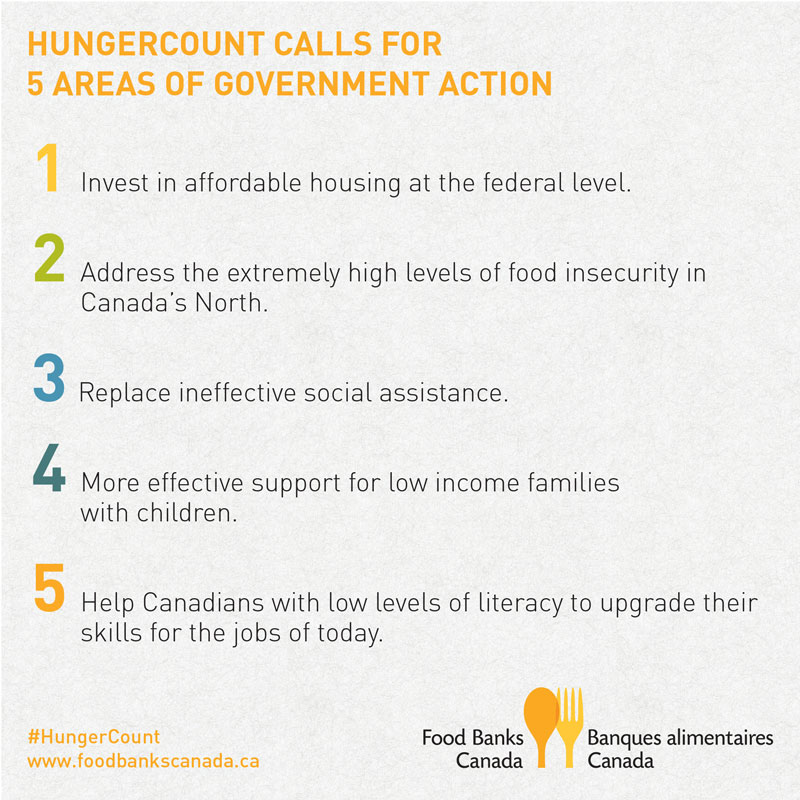Charity Spotlight: This post was provided by Marzena Gersho, Director, Communications and National Programs at Food Banks Canada, as part of our ongoing charity spotlight series.

When the first food banks opened their doors in Canada over 30 years ago, there were no questions in the minds of those early volunteers that they were a temporary solution and would be closing their doors in a few short years. With the changing economic landscape, in fact the opposite has occurred and the need for food banks has grown. Today there are over 4,000 food banks and agencies dedicated to addressing hunger in communities across the country. The services of these organizations continue to be in high demand and are an essential resource for Canadians living in food insecure households.
Food bank use in Canada
Food Banks Canada recently published its annual HungerCount report – the only research study that measures the level of food bank use across the country – and the numbers are troubling. The need for food banks is still at an unbearably high level. Today food bank use is 25% higher than before the 2008 economic downturn.
- Over 840,000 Canadians seek help from a food bank every month, which is larger than the population of New Brunswick.
- Almost two in five are children and youth
- 1 in 6 households seeking help are working
- 1 in 10 walking through the doors each month are helped for the first time
Why do we need food banks in Canada?
Over the last few decades Canada has seen significant changes in its economic landscape. Though the economy has grown, The employment landscape in particular has endured seismic shifts: hundreds of thousands of good paying and secure jobs, like those found in the manufacturing and natural resource sectors, have been lost – only to be replaced by low paying work, often in the service sector. This has meant a large proportion of Canadians are not able to earn enough income to meet their basic needs and where food banks are often helping to bridge the gap.

Advocating for long term change
Fundamentally, we know food banks are not the long term answer to hunger in Canada. While thousands of organizations work to provide hampers, implement local food programs and promote healthy food systems, the most effective and long term change will be through government initiatives. Federal and provincial supports can and will have the greatest impact for the greatest number of people.
An important aspect of our work is pushing for policy change and HungerCount is one of the vehicles that further this discussion. This year’s report proposes five recommendations that we believe will go a long way to helping Canadians out of poverty:
- Invest in affordable housing at the federal level.
- Address the extremely high levels of food insecurity in Canada’s North.
- Replace the social assistance system at the provincial level with a basic income administered through the tax system.
- Provide more effective support to low income families with children by replacing the current range of federal child benefits with a strengthened Child Well-Being Benefit.
- Help Canadians with low levels of literacy to upgrade their skills for the jobs of today.

How you can make a difference
We are pushing for policy change to reduce the need for food banks; unfortunately, in the meantime food banks need your help. Food banks are in overdrive to collect food , as often demand rises but also donations will drop after the holiday season. Food banks often raise enough food to help cover two or three months after the holiday. And while food is the bread and butter of their operations, money is also a necessity that often is not top of mind for donors. Financial donations ensure there is gas in the trucks to pick up the food, the lights stay on and even to purchase additional food supplies like milk and meat to supplement hampers with food items that are more difficult to acquire through donations.
If you are in a position to help, the next time you are in your grocery store, consider picking up a few essential items to drop in the food bank bin. And a cash donation will go a long way to feeding a family. Your local food bank will appreciate it, and even more so, a neighbour in need.
Read the HungerCount Report Here.
To learn more about Food Banks Canada please visit their charity profile page >>>
Leave a Reply